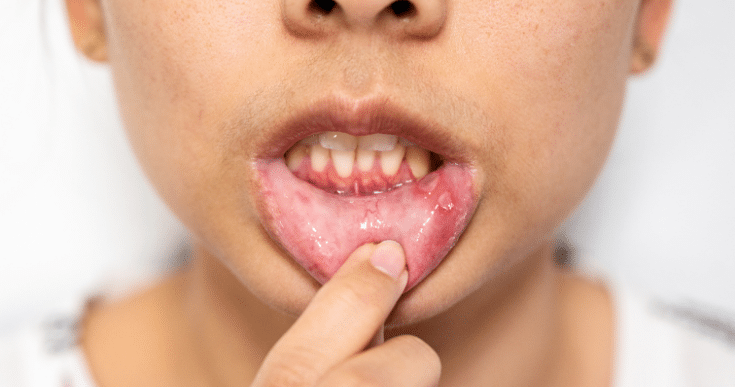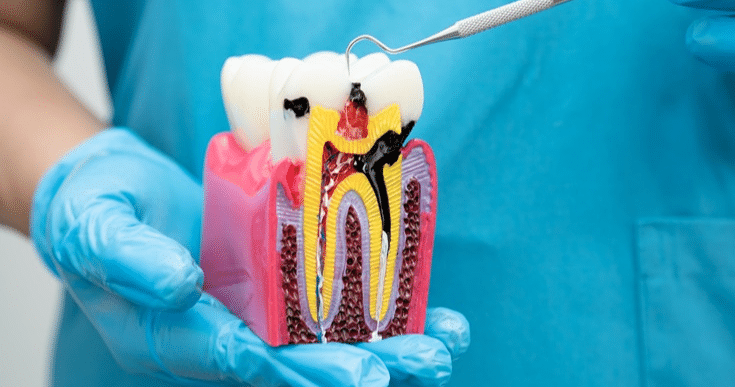
A toothache can be a real pain, literally and figuratively. While cavities and gum disease are common culprits, sometimes the issue goes deeper. This is where root canal treatment comes in. This article, brought to you, aims to equip you with a clear and comprehensive understanding of root canals, including the potential for gum infection after the root canal procedure, its symptoms, and how to prevent and treat it.
What is a Root Canal?
A root canal is a dental procedure designed to save a severely infected or damaged tooth. The inner part of your tooth, called the pulp, contains nerves and blood vessels. When bacteria invade the pulp due to deep decay, trauma, or other factors, it becomes inflamed and infected, causing pain and swelling.
The Root Canal Process:
During a root canal, the dentist numbs the area around the tooth and creates an access hole in its crown. They then remove the infected pulp, clean and disinfect the root canals, and fill them with a special material. Finally, the tooth is sealed with a temporary or permanent filling, often followed by a crown for additional protection and strength.
Causes of Gum Infection After Root Canal Treatment:
While root canal treatment effectively eliminates infection within the tooth, complications can occur, leading to gum infections. One primary cause is inadequate removal of infected pulp during the procedure. If any infected tissue remains within the root canal system, bacteria can proliferate, leading to gum inflammation and infection.
Additionally, a poorly sealed or overfilled root canal can create an environment conducive to bacterial growth. If the filling material doesn’t completely seal the tooth’s canal or if it extends beyond the apex, bacteria may infiltrate the surrounding gum tissues, causing infection.
Furthermore, pre-existing gum disease or poor oral hygiene can increase the risk of post-root canal gum infections. Bacteria from plaque and tartar buildup can migrate to the treated tooth, complicating the healing process and predisposing the gums to infection.
Symptoms of Gum Infection:
- Persistent Pain: Persistent or worsening pain around the treated tooth may indicate an underlying gum infection.
- Swelling: Swelling, tenderness, or redness in the gums adjacent to the treated tooth can signify inflammation and infection.
- Gum Abscess: The formation of a gum abscess, characterized by a pimple-like bump on the gums, may indicate the presence of infection.
- Sensitivity to Pressure: Sensitivity to pressure or discomfort when biting down can suggest gum inflammation or infection.
- Prolonged Healing: Delayed healing or the persistence of symptoms beyond the expected recovery period following root canal treatment may warrant evaluation for gum infection.
Treating and Preventing Gum Infection After Root Canal Treatment:
Treatment for gum infection following root canal treatment typically involves a combination of antimicrobial therapy, drainage of any abscess, and, in severe cases, surgical intervention to address persistent infection or inadequate root canal therapy.
Antimicrobial Therapy:
Your dentist may prescribe antibiotics to combat the bacterial infection and reduce inflammation in the gums. It’s essential to follow your dentist’s instructions regarding medication dosage and duration to ensure effective treatment.
Abscess Drainage:
If a gum abscess is present, your dentist may need to drain the pus to alleviate pressure and facilitate healing. This procedure may involve making a small incision in the gum tissue to allow the pus to drain freely.
Surgical Intervention:
In cases of persistent or recurrent infection, surgical intervention, such as root canal retreatment or apicoectomy (surgical removal of the tooth’s apex), may be necessary to address the underlying cause of the gum infection.
Preventing gum infection after root canal treatment requires diligent oral hygiene practices and regular dental check-ups. Here are some preventive measures to consider:
- Maintain Good Oral Hygiene: Brush your teeth twice daily, floss regularly, and use an antimicrobial mouthwash to reduce bacterial plaque and prevent gum disease.
- Attend Regular Dental Check-ups: Schedule routine dental visits for professional cleanings and examinations to detect and address any oral health issues promptly.
- Follow Post-Treatment Instructions: Adhere to your dentist’s post-root canal treatment instructions, including any prescribed medications and follow-up appointments.
- Address Gum Disease: If you have pre-existing gum disease, seek treatment from your dentist to manage the condition effectively and reduce the risk of complications following root canal treatment.
Conclusion:
Gum infection after root canal treatment can pose challenges to dental health, but with prompt recognition and appropriate management, favorable outcomes can be achieved. By understanding the causes, symptoms, treatment, and prevention strategies outlined in this guide, you can take proactive steps to safeguard your oral health and preserve the longevity of your treated tooth. Remember, maintaining good oral hygiene and seeking timely dental care are essential components of a healthy smile.




